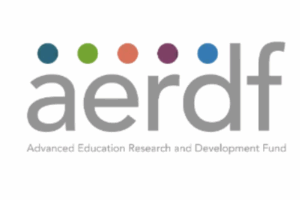Books, Courses & Certifications
How Amazon Bedrock powers next-generation account planning at AWS

At AWS, our sales teams create customer-focused documents called account plans to deeply understand each AWS customer’s unique goals and challenges, helping account teams provide tailored guidance and support that accelerates customer success on AWS. As our business has expanded, the account planning process has become more intricate, requiring detailed analysis, reviews, and cross-team alignment to deliver meaningful value to customers. This complexity, combined with the manual review effort involved, has led to significant operational overhead. To address this challenge, we launched Account Plan Pulse in January 2025, a generative AI tool designed to streamline and enhance the account planning process. Implementing Pulse delivered a 37% improvement in plan quality year-over-year, while decreasing the overall time to complete, review, and approve plans by 52%.
In this post, we share how we built Pulse using Amazon Bedrock to reduce review time and provide actionable account plan summaries for ease of collaboration and consumption, helping AWS sales teams better serve our customers. Amazon Bedrock is a comprehensive, secure, and flexible service for building generative AI applications and agents. It connects you to leading foundation models (FMs), services to deploy and operate agents, and tools for fine-tuning, safeguarding, and optimizing models, along with knowledge bases to connect applications to your latest data so that you have everything you need to quickly move from experimentation to real-world deployment.
Challenges with increasing scale and complexity
As AWS continued to grow and evolve, our account planning processes needed to adapt to meet increasing scale and complexity. Before enterprise-ready large language models (LLMs) became available through Amazon Bedrock, we explored rule-based document processing to evaluate account plans, which proved inadequate for handling nuanced content and growing document volumes. By 2024, three critical challenges had emerged:
- Disparate plan quality and format – With teams operating across numerous AWS Regions and serving customers in diverse industries, account plans naturally developed variations in structure, detail, and format. This inconsistency made it difficult to make sure critical customer needs were described effectively and consistently. Additionally, the evaluation of account plan quality was inherently subjective, relying heavily on human judgment to assess each plan’s depth, strategic alignment, and customer focus.
- Resource-intensive review process – The quality assessment process relied on manual reviews by sales leadership. Though thorough, these reviews consumed valuable time that could otherwise be devoted to strategic customer engagements. As our business scaled, this approach created bottlenecks in plan approval and implementation.
- Knowledge silos – We identified untapped potential for cross-team collaboration. Developing methods to extract and share knowledge would transform individual account plans into collective best practices to better serve our customers.
Solution overview
To address these challenges, we designed Pulse, a generative AI solution that uses Amazon Bedrock to analyze and improve account plans. The following diagram illustrates the solution workflow.
The workflow consists of the following steps:
- Account plan narrative content is pulled from our CRM system on a scheduled basis through an asynchronous batch processing pipeline.
- The data flows through a series of processing stages:
- Preprocessing to structure and normalize the data and generate metadata.
- LLM inference to analyze content and generate insights.
- Validation to confirm quality and compliance.
- Results are stored securely for reporting and dashboard visualization.
We’ve integrated Pulse directly with existing sales workflows to maximize user adoption and have established feedback loops that continuously refine performance. The following diagram shows the solution architecture.
In the following sections, we explore the key components of the solution in more detail.
Ingestion
We implement a batch processing pipeline that extracts account plans from our CRM system into Amazon Simple Storage Service (Amazon S3) buckets. A scheduler triggers this pipeline on a regular cadence, facilitating continuous analysis of the most current information.
Preprocessing
Considering the dynamic nature of account plans, they are processed in daily snapshots, with only updated plans included in each run. Preprocessing is conducted at two layers: an extract, transform, and load (ETL) flow layer to organize required files to be processed, and just before model calls as part of input validation. This approach, using the plan’s last modified date, is crucial for avoiding multiple runs on the same content. The preprocessing pipeline handles the daily scheduled job that reads account plan data stored as Parquet files in Amazon S3, extracts text content from HTML fields, and generates structured metadata for each document. To optimize processing efficiency, the system compares document timestamps to process only recently modified plans, significantly reducing computational overhead and costs. The processed text content and metadata are then transformed into a standardized format and stored back to Amazon S3 as Parquet files, creating a clean dataset ready for LLM analysis.
Analysis with Amazon Bedrock
The core of our solution uses Amazon Bedrock, which provides a variety of model choices and control, data customization, safety and guardrails, cost optimization, and orchestration. We use the Amazon Bedrock FMs to perform two key functions:
- Account plan evaluation – Pulse evaluates plans against 10 business-critical categories, creating a standardized Account Plan Readiness Index. This automated evaluation identifies improvement areas with specific improvement recommendations.
- Actionable insights – Amazon Bedrock extracts and synthesizes patterns across plans, identifying customer strategic focus and market trends that might otherwise remain isolated in individual documents.
We implement these capabilities through asynchronous batch processing, where evaluation and summarization workloads operate independently. The evaluation process runs each account through 27 specific questions with tailored control prompts, and the summarization process generates topical overviews for straightforward consumption and knowledge sharing.
For this implementation, we use structured output prompting with schema constraints to provide consistent formatting that integrates with our reporting tools.
Validation
Our validation framework includes the following components:
- Input and output validations are critical as part of the OWASP Top 10 for Large Language Model Applications. The input validation is essential by the introduction of necessary guardrails and prompt validation, and the output validation makes sure the results are structured and constrained to expected responses.
- Automated quality and compliance checks against established business rules.
- Additional review for outputs that don’t meet quality thresholds.
- A feedback mechanism that improves system accuracy over time.
Storage and visualization
The solution includes the following storage and visualization components:
- Amazon S3 provides secure storage for all processed account plans and insights.
- A daily run cadence refreshes insight and enables progress tracking.
- Interactive dashboards offer both executive summaries and detailed plan views.
Engineering for production: Building reliable AI evaluations
When transitioning Pulse from prototype to production, we implemented a robust engineering framework to address three critical AI-specific challenges. First, the non-deterministic nature of LLMs meant identical inputs could produce varying outputs, potentially compromising evaluation consistency. Second, account plans naturally evolve throughout the year with customer relationships, making static evaluation methods insufficient. Third, different AWS teams prioritize different aspects of account plans based on specific customer industry and business needs, requiring flexible evaluation criteria. To maintain evaluation reliability, we developed a statistical framework using Coefficient of Variation (CoV) analysis across multiple model runs on account plan inputs. The goal is to use the CoV as a correction factor to address the data dispersion, which we achieved by calculating the overall CoV at the evaluated question level. With this approach, we can scientifically measure and stabilize output variability, establish clear thresholds for selective manual reviews, and detect performance shifts requiring recalibration. Account plans falling within confidence thresholds proceed automatically in the system, and those outside established thresholds are flagged for manual review. We complemented this with a dynamic threshold weighting system that aligns evaluations with organizational priorities by assigning different weights to criteria based on business impact. This customizes thresholds across different account types—for example, applying different evaluation parameters to enterprise accounts versus mid-market accounts. These business thresholds undergo periodic review with sales leadership and adjustment based on feedback, so our AI evaluations remain relevant while maintaining quality and saving valuable time.
Conclusion
In this post, we shared how Pulse, powered by Amazon Bedrock, has transformed the account planning process for AWS sales teams. Through automated reviews and structured validation, Pulse streamlines quality assessments and breaks down knowledge silos by surfacing actionable customer intelligence across our global organization. This helps our sales teams spend less time on reviews and more time making data-driven decisions for strategic customer engagements.
Looking ahead, we’re excited to enhance Pulse’s capabilities to measure account plan execution by connecting strategic planning with sales activities and customer outcomes. By analyzing account plan narratives, we aim to identify and act on new opportunities, creating deeper insights into how strategic planning drives customer success on AWS.
We aim to continue to use the new capabilities of Amazon Bedrock for enhanced and robust improvements to our processes. By building flows for orchestrating our workflows, use of Amazon Bedrock Guardrails, introduction of agentic frameworks, and use of Strands Agents and Amazon Bedrock AgentCore, we can make a more dynamic flow in the future.
To learn more about Amazon Bedrock, refer to the Amazon Bedrock User Guide, Amazon Bedrock Workshop: AWS Code Samples, AWS Workshops, and Using generative AI on AWS for diverse content types. For the latest news on AWS, see What’s New with AWS?
About the authors
 Karnika Sharma is a Senior Product Manager in the AWS Sales, Marketing, and Global Services (SMGS) org, where she works on empowering the global sales organization to accelerate customer growth with AWS. She’s passionate about bridging machine learning and AI innovation with real-world impact, building solutions that serve both business goals and broader societal needs. Outside of work, she finds joy in plein air sketching, biking, board games, and traveling.
Karnika Sharma is a Senior Product Manager in the AWS Sales, Marketing, and Global Services (SMGS) org, where she works on empowering the global sales organization to accelerate customer growth with AWS. She’s passionate about bridging machine learning and AI innovation with real-world impact, building solutions that serve both business goals and broader societal needs. Outside of work, she finds joy in plein air sketching, biking, board games, and traveling.
 Dayo Oguntoyinbo is a Sr. Data Scientist with the AWS Sales, Marketing, and Global Services (SMGS) Organization. He helps both AWS internal teams and external customers take advantage of the power of AI/ML technologies and solutions. Dayo brings over 12 years of cross-industry experience. He specializes in reproducible and full-lifecycle AI/ML, including generative AI solutions, with a focus on delivering measurable business impacts. He has MSc. (Tech) in Communication Engineering. Dayo is passionate about advancing generative AI/ML technologies to drive real-world impact.
Dayo Oguntoyinbo is a Sr. Data Scientist with the AWS Sales, Marketing, and Global Services (SMGS) Organization. He helps both AWS internal teams and external customers take advantage of the power of AI/ML technologies and solutions. Dayo brings over 12 years of cross-industry experience. He specializes in reproducible and full-lifecycle AI/ML, including generative AI solutions, with a focus on delivering measurable business impacts. He has MSc. (Tech) in Communication Engineering. Dayo is passionate about advancing generative AI/ML technologies to drive real-world impact.
 Mihir Gadgil is a Senior Data Engineer in the AWS Sales, Marketing, and Global Services (SMGS) org, specializing in enterprise-scale data solutions and generative AI applications. With 9+ years of experience and a Master’s in Information Technology & Management, he focuses on building robust data pipelines, complex data modeling, and ETL/ELT processes. His expertise drives business transformation through innovative data engineering solutions, advanced analytics capabilities.
Mihir Gadgil is a Senior Data Engineer in the AWS Sales, Marketing, and Global Services (SMGS) org, specializing in enterprise-scale data solutions and generative AI applications. With 9+ years of experience and a Master’s in Information Technology & Management, he focuses on building robust data pipelines, complex data modeling, and ETL/ELT processes. His expertise drives business transformation through innovative data engineering solutions, advanced analytics capabilities.
 Carlos Chinchilla is a Solutions Architect at Amazon Web Services (AWS), where he works with customers across EMEA to implement AI and machine learning solutions. With a background in telecommunications engineering from the Technical University of Madrid, he focuses on building AI-powered applications using both open source frameworks and AWS services. His work includes developing AI assistants, machine learning pipelines, and helping organizations use cloud technologies for innovation.
Carlos Chinchilla is a Solutions Architect at Amazon Web Services (AWS), where he works with customers across EMEA to implement AI and machine learning solutions. With a background in telecommunications engineering from the Technical University of Madrid, he focuses on building AI-powered applications using both open source frameworks and AWS services. His work includes developing AI assistants, machine learning pipelines, and helping organizations use cloud technologies for innovation.
 Sofian Hamiti is a technology leader with over 10 years of experience building AI solutions, and leading high-performing teams to maximize customer outcomes. He is passionate in empowering diverse talent to drive global impact and achieve their career aspirations.
Sofian Hamiti is a technology leader with over 10 years of experience building AI solutions, and leading high-performing teams to maximize customer outcomes. He is passionate in empowering diverse talent to drive global impact and achieve their career aspirations.
 Sujit Narapareddy, Head of Data & Analytics at AWS Global Sales, is a technology leader driving global enterprise transformation. He leads data product and platform teams that power AWS’s Go-to-Market through AI-augmented analytics and intelligent automation. With a proven track record in enterprise solutions, he has transformed sales productivity, data governance, and operational excellence. Previously at JPMorgan Chase Business Banking, he shaped next-generation FinTech capabilities through data innovation.
Sujit Narapareddy, Head of Data & Analytics at AWS Global Sales, is a technology leader driving global enterprise transformation. He leads data product and platform teams that power AWS’s Go-to-Market through AI-augmented analytics and intelligent automation. With a proven track record in enterprise solutions, he has transformed sales productivity, data governance, and operational excellence. Previously at JPMorgan Chase Business Banking, he shaped next-generation FinTech capabilities through data innovation.
Books, Courses & Certifications
In a System That Wasn’t Built for Me, My Students Help Me Stay

Academia is a high-stress, high-surveillance environment. Faculty are asked to do more with less: more students, more reporting, more unpaid labor — and less time, less support, and less say in decisions that shape our work. For many of us, the job has become a constant negotiation between our values and institutional priorities.
And yet, I stay. Not for the salary. Not for the endless meetings or initiatives that depend on faculty labor but often move forward without our input. I stay because of my students. They are the reason I continue to show up.
At the California State University where I teach, my students come from a wide range of racial, cultural and economic backgrounds. Many are the first in their families to attend college. Few have had Black professors before. And I am one of very few Black faculty on campus.
It can be isolating. I attend meetings where no one else looks like me. I navigate policies that were not built with people like me in mind. Even well-intentioned efforts to foster belonging often feel top-down or disconnected from the everyday realities of teaching, mentoring and being visible.
But my students — across all backgrounds — support me in ways they may not even realize. It’s in the way they show up, engage with material, trust me with their stories, or quietly ask, “How are you doing?” They remind me: when Black professors are in the classroom, everyone benefits.
They understand that representation is about more than role models for Black students. It expands perspectives, deepens classroom trust, and allows for more honest, critical dialogue. Our presence in the academy challenges the status quo and makes space for voices that are too often ignored.
They are not my formal support system, but they are my community.
In a profession where recognition is rare and burnout is high, a thank-you note, a hallway chat, or a class conversation that sparks something real can carry me through weeks of feeling invisible in faculty spaces. My students remind me that this work — when stripped of the bureaucracy — still matters.
To be sure, students should never be expected to carry the emotional weight of supporting their professors. That is not their role. The gratitude I feel does not excuse the broader shortcomings of higher education. It simply underscores how powerful our relationships can be in the face of institutional neglect.
But universities must do more than celebrate diversity on their brochures. If they truly care about faculty success — especially for faculty of color — they need to listen to students. Students see us more than any task force or strategic plan. They witness our labor and our care firsthand.
Institutions should partner with students to co-create strategies for retaining faculty of color. That means going beyond traditional evaluations to foster real conversations about campus climate, mentorship and visibility. It means funding student-led efforts that recognize and uplift faculty who teach and build community — the very labor that fuels student success but often goes unrewarded.
Universities should also rethink what support looks like outside of formal structures. Sometimes what faculty need is not another committee, but a space to gather, breathe and feel seen. Student organizations often model this well. They create spaces that are joyful, inclusive and rooted in mutual care. Faculty can benefit from those spaces too — not as authority figures, but as participants in a shared community.
Creating sustainable change in higher education doesn’t require reinventing the wheel. It requires valuing the relationships already happening on campuses every day. When students trust their professors, when faculty show up with care, when conversations extend beyond grades and the syllabus — those are the moments that build true community.
Academia doesn’t always recognize our full contributions. And for those of us at the intersections of race, gender and class, it can be especially isolating. But my students remind me every day that I belong — not just because I teach, but because I matter. That, more than anything, is why I keep going.
This isn’t just about one professor’s experience. It’s a reminder to higher-ed leaders, policymakers and educators that student-faculty relationships are powerful levers for change. If we want to build inclusive, thriving campuses, we must center the people who are already doing the work of belonging — even when no one is watching.
Books, Courses & Certifications
5 Free Courses And Certificates To Put On Your Resume In 2025

A course or certificate, even if in progress and not completed yet, can make all the difference between getting hired for your dream job and being passed off for another candidate
getty
An estimated 97% of employers are currently using, or about to implement, skills-based hiring, according to Coursera’s latest report.
That’s a significant 20% leap from 2023, when skills-based hiring was increasingly becoming a buzzword in HR circles, with the U.S. Department of Labor releasing recommendations and a guidebook for skills-based hiring a year later.
5 Free Courses And Career Certificates To Include In Your Resume
Short online courses and certificates are some of the best ways to demonstrate your skills and suitability, not just for the job, but also for the company culture, especially if it thrives on a growth mindset.
Here are some free courses and certificates you can study today and add to your resume to boost your chances of being hired (and help you negotiate for higher pay too):
1. Free Social Media Marketing Certification Course: Get Certified In Social Media Strategy
- Free, by HubSpot Academy
- Perfect for small business owners, marketing managers, and content creators/freelancers
- Total completion time is five hours and 18 minutes
2. Data Landscape Of GenAI For Project Managers
- Free for PMI members, by PMI (Project Management Institute)
- Perfect if you’re already a project management professional
- Total course length is five hours
(You can find other free beginner-friendly Gen AI courses here in my recent article.)
3. Practical Application Of Generative AI For Project Managers
- Free, by PMI
- Suitable for new and existing project management professionals
- Total course length is five hours
4. IBM: Data Analytics Basics For Everyone Free Course
- Free if you select the audit option, on edX
- Perfect for beginners
- You can gain a certificate, but only if you take the paid option; otherwise you can complete this for free
- Takes approximately five weeks at three hours a week to complete
5. Getting Started With Python for Data Science, by Codeacademy
- Free course by Codecademy
- Includes three hands-on projects to flex your skills and demonstrate your knowledge
- Is suitable for beginners
Is A Career Certificate Worth It?
Here are some other reasons why studying a course or career certificate is absolutely essential if you’re seeking to land a promotion, salary premium, high-paying client projects, or get hired faster:
- About 96% of the 1,000 employers surveyed for the report indicate that a job candidate having a course or certificate on their resume strengthens their application and boosts their chances of being hired, up from 88% two years ago.
- In the U.S. and Canada, 90% of employers say they’d offer a higher starting salary to candidates who’ve completed certificates and short courses.
- Nearly a third of entry-level professionals who studied a course or certificate in the past year secured a salary raise.
- An estimated 21% earned a promotion as a direct result of studying courses and certificates
(These stats are taken from Coursera’s Microcredentials Report 2025.)
I know from first-hand experience that studying an online course makes it easier to get hired faster.
In 2022, I was interviewed for a project management role that was a stretch outside of my comfort zone.
When it came time for the dreaded but much-anticipated interview question, “Tell us about one of your weaknesses,” I took this as an opportunity to relate one of my “weak” areas in project management, but then anchored my answer by sharing that I was currently studying the Google Career Certificate in Project Management (at the time this was free due to financial aid offered on Coursera).
I was hired that same day.
My manager later confided to me that even though I had less experiences than other candidates, this very detail (the course I was studying) was the deciding factor that made her take a bet on me and hire me for the job, because I had proven that I had a growth mindset and clearly had freshly updated skills that could be put to use in the role.
So yes, free online courses with certificates are absolutely worth it.
Where Can I Find Free Online Courses And Certificates?
Choose one free online course or certification from the list above, or find another one that’s more relevant to your career goals. You can find free online courses with certificates (and without certificates) from platforms like:
- LinkedIn Learning (free to Premium members)
- Codecademy
- Great Learning
- Alison
- edX
- IBM SkillsBuild
- Microsoft Learn
- HubSpot
And many more are just a tap away.
Once you’ve started, be consistent. Block out some time every week to study and practice, and share what you’re learning on LinkedIn. You can also add your course or certificate to your resume and include a progress note, like “currently studying,” or “due to complete by October 2025.” This is a positive sign to employers that you’re actively building yourself professionally, and it encourages them to invite you for interviews and offer you job and promotion opportunities.
About 97% of employers are adopting skills-based hiring, which means certificates are in greater demand than degrees
getty
You’re just a few weeks away from changing your entire career and income trajectory.
Books, Courses & Certifications
Get AI Certified With edX
edX is again offering a discount of up to 30% on selected courses and program bundles until September 10th. Since AI is currently the hot topic we look at what is on offer.
Disclosure: When you make a purchase having followed a link to from this article, we may earn an affiliate commission.
Billed as the Top AI Program on edX, the Oxford Artificial Intelligence Programme is offered through the University of Oxford’s Saïd Business School. The current session started on August 6th and is open to late registrations until August 11th.
Offered in its Executive Education category, and thus and is included in the offer, the program is designed to provide a comprehensive understanding of AI for a diverse professional audience and there are no prerequisites. It consists of a welcome orientation module followed by six weekly modules that are released sequentially. Each module is estimated to take 7–10 hours per week. The curriculum covers a range of topics, from foundational concepts to real-world business applications and ethical considerations.
-
Module 1: Artificial Intelligence Ecosystem – Explores the history of AI and its place within the broader digital ecosystem.
-
Module 2: AI and Machine Learning – Delves into the mechanics of machine learning, including supervised, unsupervised, and reinforcement learning.
-
Module 3: Deep Learning and Neural Networks – Understands the function of deep learning and neural networks.
-
Module 4: Working with Intelligent Machines – Examines the impact of AI on the workforce and the concept of machine intelligence.
-
Module 5: The Ethics of Artificial Intelligence – Discusses the ethical, legal, and regulatory aspects of AI.
-
Module 6: How to Drive AI in Your Business – Focuses on identifying business opportunities for AI and building a business case for its implementation.
Upon successful completion, participants are expected to be able to:
-
Evaluate the potential impact of AI on their industry and develop a business case for its adoption.
-
Establish a framework for critically analyzing the social and ethical implications of AI.
-
Gain a conceptual understanding of machine learning, deep learning, and neural networks.
-
Receive a certificate of attendance from the Saïd Business School, University of Oxford.
-
Join the official Oxford Executive Education Alumni group on LinkedIn.
As already mentioned this programme is for business professionals. If you are a professional developer IBM now has a new microcredential, IBM:AI Developer starting on October 15th but still in the offer as long as you register by September 10th.
The six-week course consists of a welcome orientation module followed by six weekly modules estimated to take 10-12 hours per week:
- Module 1: Introduction to AI, GenAI, and Prompt Engineering
- Module 2: Introduction to Web Development
- Module 3: Using Python for Data Science
- Module 4: Python Fundamentals and Data
- Module 5: Python Coding Practices and Web Application Development
- Module 6: Capstone Project: Develop AI Applications Using Python
Over six weeks, participants will learn the building blocks of AI development while honing real-world job-ready skills that include:
- Using Python, HTML, CSS, and JavaScript for web and software development
- Applying Python programming fundamentals to collect data and drive business solutions
- Creating and deploying web applications using Flask
- Building generative AI applications using Python
Assessment is continuous and based on a series of practical assignments completed online.
The existing IBM Applied AI Developer Professional Certificate, comprising 7 courses over 6 months and the Generative AI Engineering Professional Certificate also from IBM and comprising 16 courses over 13 months, both of which are described in AI At edX With 30% Savings are also encompassed by the offer as long as you enroll in the full programs without any other discounts.
And of course edX Professional Certificates that we’ve previously explored in Brand New Data Science Courses on edX, Gain A Python Professional Certificate From edX and other articles are also part of the edX Back to School offer that runs until September 10, with the code SKILLSEDX25.
-

 Events & Conferences3 months ago
Events & Conferences3 months agoJourney to 1000 models: Scaling Instagram’s recommendation system
-

 Funding & Business1 month ago
Funding & Business1 month agoKayak and Expedia race to build AI travel agents that turn social posts into itineraries
-

 Jobs & Careers1 month ago
Jobs & Careers1 month agoMumbai-based Perplexity Alternative Has 60k+ Users Without Funding
-

 Education1 month ago
Education1 month agoVEX Robotics launches AI-powered classroom robotics system
-

 Education1 month ago
Education1 month agoAERDF highlights the latest PreK-12 discoveries and inventions
-

 Mergers & Acquisitions1 month ago
Mergers & Acquisitions1 month agoDonald Trump suggests US government review subsidies to Elon Musk’s companies
-

 Jobs & Careers1 month ago
Jobs & Careers1 month agoAstrophel Aerospace Raises ₹6.84 Crore to Build Reusable Launch Vehicle
-

 Podcasts & Talks1 month ago
Podcasts & Talks1 month agoHappy 4th of July! 🎆 Made with Veo 3 in Gemini
-

 Podcasts & Talks1 month ago
Podcasts & Talks1 month agoOpenAI 🤝 @teamganassi
-

 Jobs & Careers1 month ago
Jobs & Careers1 month agoTelangana Launches TGDeX—India’s First State‑Led AI Public Infrastructure


